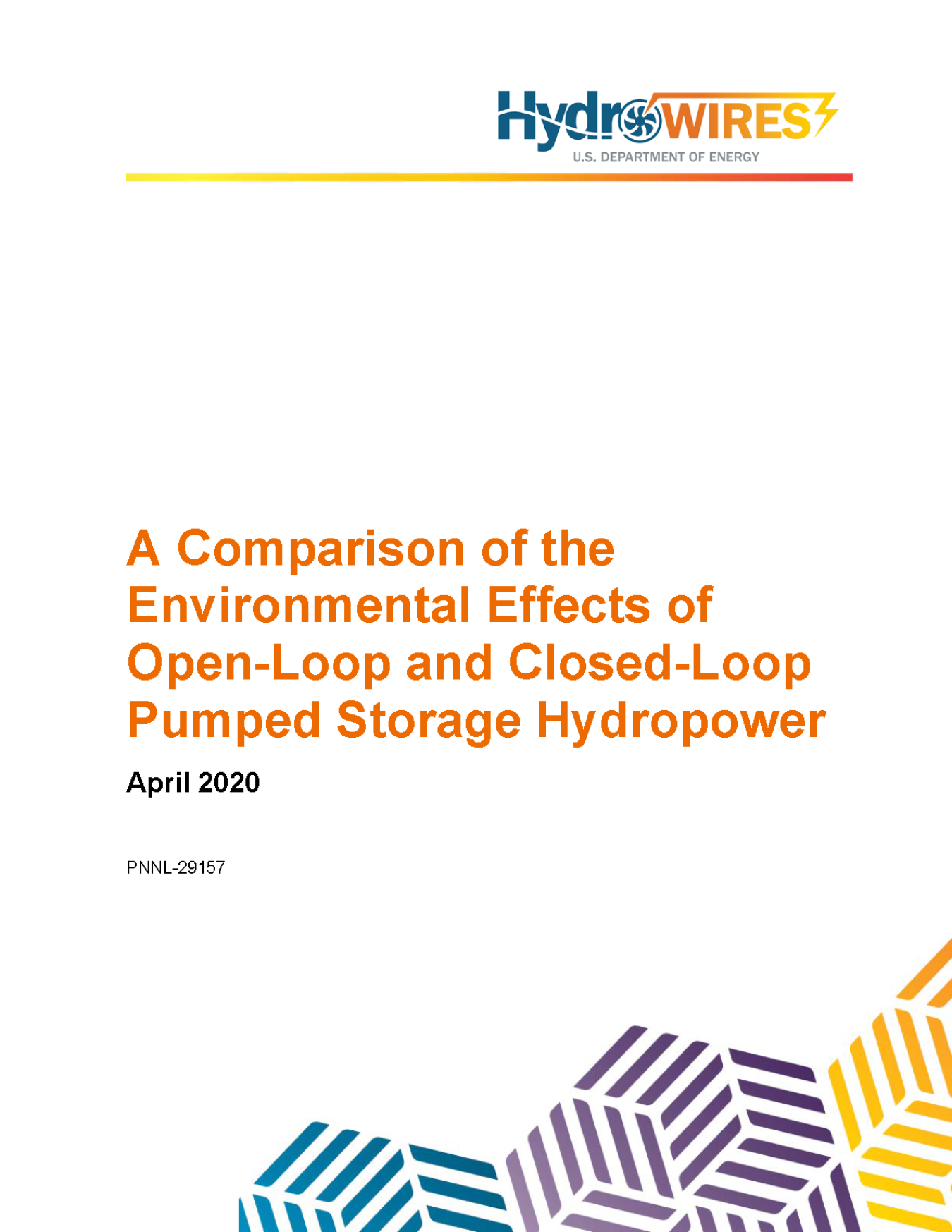A Comparison of the Environmental Effects of Open-Loop and Closed-Loop Pumped Storage Hydropower.
Water Power Technologies Office
April 13, 2020
Pumped storage hydropower (PSH) is a type of energy storage that uses the pumping and release of water between two reservoirs at different elevations to store water and generate electricity (Figure ES-1). When demand for electricity is low, a PSH project can use low cost energy to pump water from the lower reservoir to the upper reservoir for storage. When demand for electricity is high, a PSH project can release water from the upper reservoir through a powerhouse to generate electricity. Traditionally, this meant that PSH plants generated power during the day and pumped at night, with modest diurnal or seasonal variation.
Today, PSH pumping operations are changing to facilitate the integration of the tremendous growth of variable renewable energy (VRE) generating resources, especially wind and solar, on the U.S. grid. PSH facilities are often a least cost option for high capacity (both energy and power), long-duration storage, and can provide the flexibility and fast response that a high-VRE-penetration grid requires. PSH faces its own set of challenges in construction and operation, however, including high initial capital costs, long construction timeframes, uncertainty in revenue streams (similar to all storage), and potential environmental impacts. The U.S. Department of Energy’s (DOE) HydroWIRES initiative includes research to address each of these challenges. This report focuses on potential environmental impacts: specifically, the degree to which impacts can be reduced by using closed-loop pumped storage systems as opposed to the traditionally more common open loop systems.
Download the report:

